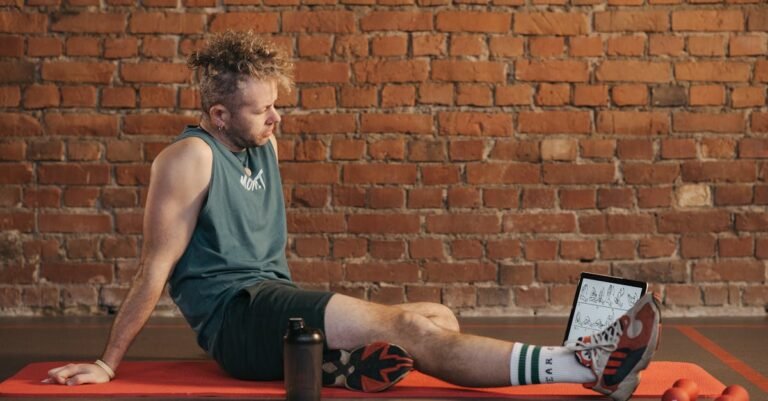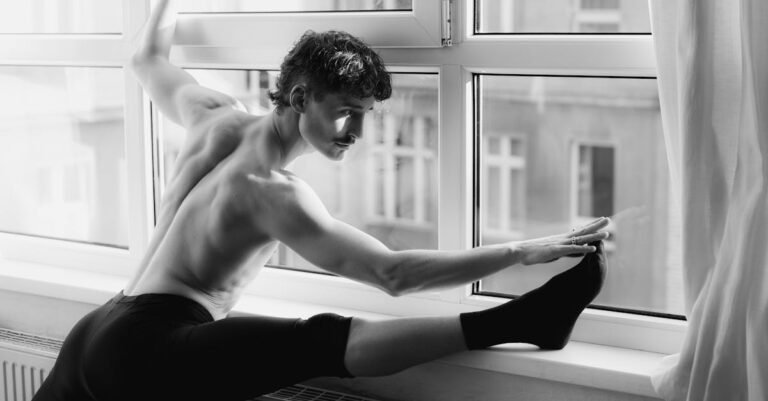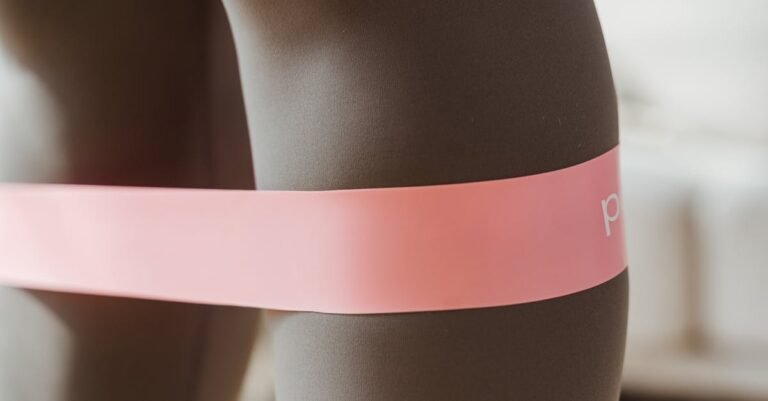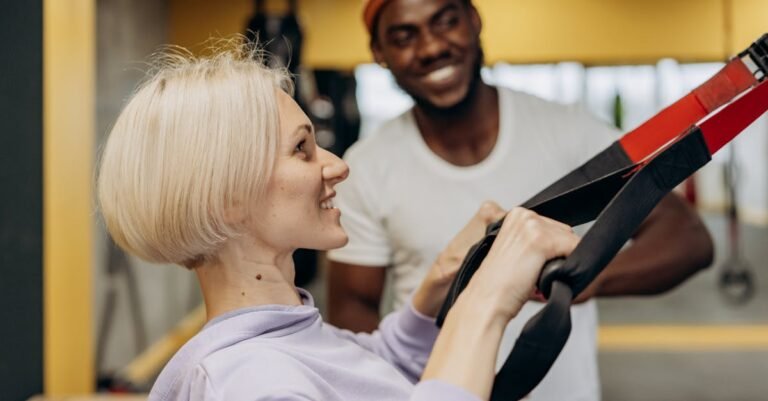- Yoga Poses For Beginners: Improve Flexibility
- Why Flexibility Matters (More Than Just Touching Your Toes!)
- Getting Started: What Beginners Need to Know Before Unrolling the Mat
- Top Yoga Poses for Beginner Flexibility
- Building a Beginner Flexibility Routine
- Beyond the Poses: Tips for Enhancing Flexibility
- Conclusion: Your Journey to a More Flexible You
- Frequently Asked Questions (FAQs)
Yoga Poses For Beginners: Improve Flexibility
Ever feel like your body moves with the grace of a rusty hinge? Maybe reaching for that dropped pen feels like an Olympic event, or perhaps just sitting cross legged makes your hips scream in protest. If any of this sounds familiar, you’re definitely not alone! Many of us navigate daily life feeling stiff and restricted. But what if I told you there’s a gentle, accessible way to unlock newfound suppleness and ease? Enter the wonderful world of yoga, specifically poses perfect for beginners aiming to boost their flexibility.
Forget those images of pretzel like contortionists you might see online. Yoga, at its core, is about connecting with your body, honoring its current capabilities, and gently encouraging it to open up. Improving flexibility isn’t just about impressive party tricks; it’s about enhancing your overall quality of life, reducing aches and pains, and moving through your day with greater freedom. Ready to ditch the stiffness and embrace a more limber you? Let’s dive into some beginner friendly yoga poses designed to do just that!
Why Flexibility Matters (More Than Just Touching Your Toes!)
Okay, let’s be real. Touching your toes is kind of cool, but flexibility offers so much more than bragging rights. Think of your muscles like rubber bands. When they’re cold and tight, they’re more prone to snapping (injury!). When they’re warm and pliable (flexible), they can stretch and return to shape without issue. Good flexibility translates to:
- Reduced Risk of Injury: Flexible muscles can withstand more physical stress. Think better shock absorption and less strain on joints during everyday activities or exercise.
- Less Pain: Tight muscles, especially in the back, hips, and neck, are major culprits behind chronic aches. Improving flexibility can alleviate tension and reduce discomfort. Ever get that nagging lower back pain after sitting too long? Tight hamstrings and hip flexors are often to blame!
- Improved Posture: Muscular imbalances often lead to poor posture (hello, slouching!). Stretching tight chest muscles and strengthening weak back muscles through yoga can help you stand taller and straighter.
- Better Physical Performance: Whether you’re an athlete or just enjoy weekend walks, a greater range of motion in your joints allows for more efficient and powerful movements.
- Increased Relaxation: The physical act of stretching and releasing tension can have a profound effect on your mental state, promoting relaxation and reducing stress. Holding a gentle stretch and breathing deeply signals your nervous system to chill out.
So, you see? Flexibility isn’t just a physical trait; it’s a cornerstone of overall well being. It allows you to move more freely, feel better in your body, and potentially avoid injuries down the line. It’s about function, comfort, and longevity!
Getting Started: What Beginners Need to Know Before Unrolling the Mat
Feeling inspired? Awesome! Before you jump feet first into Downward Dog, let’s cover a few basics to ensure your journey into yoga flexibility is safe, enjoyable, and effective.
Finding Your Space and Gear
You don’t need a fancy studio or expensive gear to start. Find a quiet spot in your home where you have enough room to stretch your arms and legs out comfortably. A yoga mat is highly recommended – it provides cushioning and prevents slipping. You can find inexpensive beginner mats online or at most department stores. What about clothes? Wear something comfortable that allows you to move freely. Think leggings, sweatpants, shorts, t shirts, or tank tops. Barefoot is best for grip on the mat.
Optional props like blocks (foam or cork bricks) and straps (long belts) can be incredibly helpful for beginners. Blocks bring the floor closer to you in poses like forward folds, while straps help you reach your feet or hands if your flexibility is limited. Don’t see them as ‘cheating’ – see them as tools to help you find the right alignment and get the most benefit from the pose safely!
Listening to Your Body: The Golden Rule
This is perhaps the MOST important principle in yoga. Forget “no pain, no gain.” In yoga, especially when working on flexibility, the mantra should be “no *sharp* pain, definite gain!” You want to feel a stretch, a sensation of lengthening or opening, sometimes described as ‘comfortable discomfort’. However, you should *never* feel sharp, shooting, or electrical pain. That’s your body’s signal to back off immediately.
Flexibility varies day to day. Some days you’ll feel more open, others tighter. Honor where you are each time you step onto the mat. Don’t force yourself into a shape your body isn’t ready for. Progress comes with consistency and patience, not pushing through pain. Remember, yoga is a practice, not a performance.
Breathing (Pranayama): The Secret Sauce
You breathe all day without thinking about it, right? But in yoga, we bring conscious awareness to the breath (this is called Pranayama). Why? Because your breath is intrinsically linked to your nervous system and muscle tension. Deep, steady breathing helps calm the mind and signals the muscles that it’s safe to relax and release.
Try to breathe slowly and deeply through your nose if possible. Imagine filling your belly, ribs, and chest on the inhale, and emptying completely on the exhale. When you hold a stretch, focus on sending your breath to the area where you feel the sensation. As you exhale, consciously try to soften and release a little deeper into the pose. It’s amazing how much difference focused breathing can make! Think of your breath as the wave that carries you deeper into the stretch.
Top Yoga Poses for Beginner Flexibility
Alright, let’s get to the good stuff! Here are some foundational yoga poses perfect for beginners looking to improve their flexibility. Remember to move slowly, breathe deeply, and listen to your body.
Foundational Poses for Overall Suppleness
These poses work multiple areas of the body and are staples in many yoga classes.
Downward Facing Dog (Adho Mukha Svanasana)
Ah, Downward Dog! It might look simple, but this pose is a powerhouse for stretching the entire back side of the body. Think shoulders, hamstrings, calves, and even strengthening the arms and legs.
How to do it: Start on your hands and knees (tabletop position), with hands shoulder width apart and knees hip width apart. Tuck your toes under, press firmly into your hands (spread those fingers wide!), and lift your hips up and back, straightening your legs as much as feels comfortable. Your body should form an inverted V shape. Let your head hang heavy between your arms. Beginner tip: It’s totally okay (and often better!) to keep a generous bend in your knees, especially if your hamstrings are tight. Focus on lengthening your spine first, pressing your chest towards your thighs. You can also ‘pedal’ your feet, bending one knee and then the other, to gently stretch the calves.
Flexibility focus: Hamstrings, calves, shoulders, spine.
Mountain Pose (Tadasana)
Okay, I know what you’re thinking: “Standing is a yoga pose?” Yes! Tadasana is the blueprint for all standing poses. It might seem passive, but done actively, it improves posture, balance, and body awareness, subtly engaging and aligning muscles.
How to do it: Stand tall with your big toes touching (or feet hip width apart if more comfortable). Ground down through all four corners of your feet. Engage your thigh muscles slightly, lifting the kneecaps. Tuck your tailbone slightly under to lengthen the lower back. Draw your shoulder blades down your back and open your chest. Let your arms relax by your sides, palms facing forward. Keep your chin parallel to the floor and gaze softly ahead. Breathe deeply.
Flexibility focus: While not a deep stretch, it promotes spinal alignment and postural awareness, which are foundational for flexibility work.
Child’s Pose (Balasana)
This is your go to resting pose. Whenever you need a break during your practice, come back to Child’s Pose. It gently stretches the hips, thighs, and ankles while relieving back and neck pain.
How to do it: Start on your hands and knees. Bring your big toes together to touch and widen your knees (as wide as the mat, or closer together if that feels better). Sit your hips back towards your heels and fold your torso forward, resting your forehead on the mat. You can stretch your arms out long in front of you or rest them alongside your body, palms facing up. Breathe deeply into your back body.
Flexibility focus: Hips, thighs, ankles, lower back release.
Poses Specifically Targeting Hamstrings and Lower Back
Tight hamstrings and a stiff lower back are incredibly common. These poses offer sweet relief.
Standing Forward Fold (Uttanasana)
This is a fantastic stretch for the entire back of your legs and your spine. Gravity does most of the work here!
How to do it: Start in Mountain Pose (Tadasana). Hinge forward from your hips (not your waist!), keeping your back as straight as possible initially. Let your upper body hang heavy towards the floor. Keep a generous bend in your knees – seriously, don’t lock them out! Let your head and neck relax completely. You can let your arms dangle, hold opposite elbows (ragdoll variation), or rest your hands on the floor or blocks if they reach.
Beginner tip: Bending your knees deeply is key to protecting your lower back and getting a better hamstring stretch. Focus on bringing your chest towards your thighs, rather than your nose towards your knees. Use blocks under your hands if the floor feels miles away.
Flexibility focus: Hamstrings, calves, spine.
Seated Forward Bend (Paschimottanasana)
Similar benefits to the standing version, but this seated variation offers a slightly different angle and can feel more grounding.
How to do it: Sit on the floor with your legs extended straight out in front of you. You might want to sit on the edge of a folded blanket to help tilt your pelvis forward. Flex your feet (toes pointing towards the ceiling). Inhale and lengthen your spine, reaching your arms up. Exhale and hinge forward from your hips, reaching towards your feet. Keep your back long; don’t round excessively just to reach further. Rest your hands on your shins, ankles, or feet – wherever they land comfortably. Or use a strap around the balls of your feet for assistance.
Beginner tip: If reaching forward feels impossible, focus on sitting tall with a straight spine first. Use that strap! It’s not cheating; it helps maintain good alignment while you gently encourage the forward fold.
Flexibility focus: Hamstrings, spine, shoulders (depending on arm position).
Cat Cow Stretch (Marjaryasana Bitilasana)
This dynamic duo is amazing for warming up the spine and increasing its flexibility. It also gently stretches the front and back torso.
How to do it: Start on your hands and knees (tabletop), wrists under shoulders, knees under hips. As you inhale (Cow Pose), drop your belly towards the floor, lift your chest and tailbone towards the ceiling, and look slightly up (avoid crunching your neck). As you exhale (Cat Pose), round your spine towards the ceiling, tuck your tailbone under, draw your navel towards your spine, and release your head down. Flow smoothly between these two poses, linking your breath to the movement. Repeat 5 10 times.
Flexibility focus: Spinal mobility, stretching the front torso (Cow) and back torso (Cat).
Hip Openers for Greater Range of Motion
So much tension gets stored in our hips from sitting, stress, and even exercise. Opening the hips can feel intense but incredibly freeing.
Butterfly Pose (Baddha Konasana)
A classic hip opener that targets the inner thighs and groin.
How to do it: Sit tall on the floor. Bring the soles of your feet together, letting your knees fall out to the sides. You can bring your heels as close to or as far from your groin as feels comfortable. Hold onto your ankles or feet. Sit up tall, lengthening your spine. To deepen the stretch, you can gently hinge forward from your hips, keeping your back straight. Avoid forcing your knees down with your hands.
Beginner tip: If your knees are high up, place blocks or cushions under them for support. Sitting on a blanket can also help tilt the pelvis forward.
Flexibility focus: Inner thighs (adductors), groin, hips.
Low Lunge (Anjaneyasana)
This pose provides a fantastic stretch for the hip flexors (the muscles at the front of your hip) of the back leg, an area that gets notoriously tight from sitting.
How to do it: From tabletop or Downward Dog, step your right foot forward between your hands. Lower your left knee gently to the mat (you can place a blanket under it for cushioning). Make sure your right knee is stacked directly over your right ankle (don’t let it go past the ankle). Slide your left knee back slightly until you feel a comfortable stretch in the front of your left hip and thigh. You can keep your hands on the floor, on blocks framing your front foot, or bring your hands to your front thigh. For a deeper stretch, inhale and reach your arms overhead, maybe adding a slight backbend if it feels good.
Beginner tip: Keep your core engaged to support your lower back. Focus on sinking your hips forward and down rather than pushing forcefully. Remember to switch sides!
Flexibility focus: Hip flexors (psoas), quadriceps (front thigh).
Gentle Spinal Twists for Mobility
Twists are like a detox for the spine, helping to maintain its normal range of motion and releasing tension.
Supine Spinal Twist (Supta Matsyendrasana)
A relaxing twist done lying down, perfect for the end of your practice.
How to do it: Lie on your back. Draw your right knee into your chest. Extend your left leg long on the mat. Open your right arm out to the side at shoulder height, palm facing up. Use your left hand to gently guide your right knee across your body towards the left side. Keep both shoulder blades grounded on the mat as much as possible (this is more important than getting the knee to the floor). Turn your head to look towards your outstretched right hand if it feels okay for your neck.
Beginner tip: If your knee doesn’t reach the floor, place a block or cushion under it for support. Focus on the twist originating from your mid spine, not just your lower back.
Flexibility focus: Spine, outer hip, chest, shoulders.
Building a Beginner Flexibility Routine
Okay, you’ve got the poses down! Now, how do you weave them into a routine that actually works?
Consistency is Key
You wouldn’t expect to get strong by lifting weights once a month, right? The same applies to flexibility. Aim for short, frequent sessions rather than one long, intense session per week. Even 10 15 minutes most days can make a significant difference over time. Consistency signals to your body that this new range of motion is safe and useful.
How Long to Hold Poses?
For beginners working on flexibility, holding static stretches for around 30 seconds (or about 5 8 deep breaths) is a good starting point. This gives your muscles time to relax and lengthen. In dynamic stretches like Cat Cow, move with your breath for 5 10 rounds. As you progress, you might hold stretches for longer (60 90 seconds), but always listen to your body. Don’t hold your breath!
Sequencing Your Poses
A simple beginner sequence could look like this:
- Warm up: Start with a few rounds of Cat Cow to mobilize the spine.
- Foundational Poses: Move into Downward Facing Dog (perhaps pedaling the feet), then step forward into Mountain Pose.
- Targeted Stretches: Flow into Standing Forward Fold (with bent knees!), maybe a Low Lunge on each side.
- Seated Poses: Come down to sit for Seated Forward Bend and Butterfly Pose.
- Cool Down/Rest: Finish with a gentle Supine Spinal Twist on each side and relax in Child’s Pose or Savasana (Corpse Pose – lying flat on your back) for a few minutes.
Feel free to mix and match the poses based on how your body feels and which areas need the most attention that day. The key is to warm up first, move mindfully through the stretches, and cool down afterwards.
Beyond the Poses: Tips for Enhancing Flexibility
While these poses are fantastic tools, a few extra habits can accelerate your flexibility journey:
- Stay Hydrated: Muscles are like sponges; they’re more pliable when well hydrated. Drink plenty of water throughout the day.
- Warm Up Properly: Never stretch cold muscles deeply. Do some light cardio (like marching in place or sun salutation variations) or dynamic movements (like Cat Cow or leg swings) before holding static stretches.
- Be Patient: Flexibility takes time to develop, especially if you’re starting from a place of significant tightness. Celebrate small improvements and don’t compare yourself to others. Your journey is unique.
- Incorporate Movement: Try not to sit in one position for too long. Get up, walk around, and do simple stretches throughout your day.
- Listen Actively: Pay attention to the sensations. Where do you feel the stretch? Is it easing or intensifying? Adjust accordingly.
Conclusion: Your Journey to a More Flexible You
Embarking on a yoga journey to improve flexibility is an incredible gift you can give yourself. It’s not about forcing your body into painful positions, but about cultivating a kinder, more attentive relationship with it. By incorporating these beginner friendly poses into a consistent practice, focusing on your breath, and always listening to your body’s signals, you’ll gradually unlock greater ease, mobility, and comfort.
Remember those rusty hinges we talked about? With patience and practice, you’ll start oiling them up, moving with more freedom and less resistance. Flexibility is more than just physical; it’s about creating space – space in your joints, space in your muscles, and even space in your mind. So roll out your mat, take a deep breath, and enjoy the process of becoming a more flexible, vibrant you. Your body will thank you!
Frequently Asked Questions (FAQs)
1. How long does it take to see results in flexibility from yoga?
There’s no single answer, as it depends on your starting point, consistency, genetics, and lifestyle. However, many beginners notice small improvements in ease of movement and reduced stiffness within a few weeks of consistent practice (3 4 times per week). Significant changes might take several months. Patience is key!
2. Can I do yoga for flexibility every day?
Yes, you can practice gentle yoga for flexibility daily. Short, mindful sessions (15 30 minutes) can be very beneficial. Just be sure to listen to your body and take rest days if you feel overly sore or fatigued. Varying the poses can also prevent repetitive strain.
3. Is it better to do yoga in the morning or evening for flexibility?
Both have benefits! Morning yoga can help relieve stiffness accumulated overnight and set a positive tone for the day, though you might feel tighter initially. Evening yoga can help release tension built up during the day and promote relaxation before sleep; you might find you’re naturally a bit more flexible later in the day. Experiment and see what works best for your schedule and body.
4. I’m really inflexible. Can I still do yoga?
Absolutely! In fact, yoga is especially beneficial if you feel inflexible. That’s like saying you’re too dirty to take a shower! Yoga meets you where you are. Use props like blocks and straps, modify poses as needed (like bending knees generously), and focus on the sensation of stretch rather than achieving a specific shape.
5. Besides yoga, what else helps improve flexibility?
Staying hydrated, incorporating dynamic stretching before workouts, using foam rolling for myofascial release, getting regular massages, and simply moving more throughout the day (avoiding prolonged sitting) can all complement your yoga practice and contribute to better overall flexibility.










